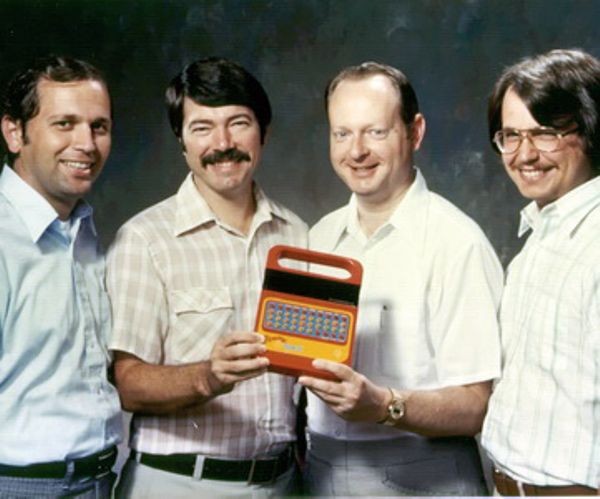On This Day in Tech History
Stories Published June 11 Throughout History
Historic Tech Events
Fermi Telescope Launched Into Orbit

In June 2008, NASA launched the Fermi Gamma-ray Space Telescope into orbit. The telescope is named after the Italian physicist Enrico Fermi, who is known for his work on the development of the first nuclear reactor and for his contributions to the field of particle physics. The Fermi telescope is designed to study gamma rays, which are the highest-energy form of electromagnetic radiation. Gamma rays are produced by some of the most energetic phenomena in the universe, such as supernovae, black holes, and gamma-ray bursts. The Fermi telescope has a number of different instruments on board that allow it to detect and study gamma rays from a wide range of sources. One of the most important instruments is the Large Area Telescope (LAT), which is capable of detecting gamma rays with energies ranging from 20 million to more than 300 billion electron volts. Since its launch, the Fermi telescope has made a number of important discoveries in the field of gamma-ray astronomy. For example, in 2010, the telescope detected gamma-ray emissions from the center of our galaxy, providing new insights into the structure and behavior of the Milky Way. The Fermi telescope has also detected gamma-ray emissions from other galaxies, providing scientists with new information about the processes that shape the evolution of galaxies and the universe as a whole. Overall, the Fermi Gamma-ray Space Telescope has been an important tool for studying the high-energy universe, and it has helped to advance our understanding of some of the most extreme and mysterious phenomena in the cosmos.
Texas Instruments Announced "Speak & Spell"

Texas Instruments Inc. released the Speak & Spell in 1978, and it quickly became a popular educational toy. It was the first handheld electronic device to use speech synthesis, which was made possible by the development of linear predictive coding (LPC) by researchers at the Massachusetts Institute of Technology (MIT) in the early 1970s. LPC allowed the device to generate speech by using a mathematical model of the human vocal tract to predict the sound of different words and phrases based on input from the user. The Speak & Spell could store up to 200 words and phrases, and it was programmed with various educational games and exercises designed to help children improve their spelling and pronunciation. The device's unique synthetic voice, which was often described as sounding "robotic" or "computer-like," was instantly recognizable and became a pop culture icon of the 1980s. The technology used in the Speak & Spell laid the foundation for the development of other speech synthesis systems, including those used in computer-assisted language learning and text-to-speech software. Today, speech synthesis is widely used in various applications, including voice assistants, navigation systems, and accessibility tools for people with disabilities.
Apple Ported Safari to Windows

Apple Inc. released its Safari web browser for Microsoft Windows in 2007. Prior to that, Safari was only available on Apple's own macOS operating system. The Windows version of Safari was initially supported on Windows XP Service Pack 2, Windows Vista, and later versions of Windows. However, Safari is not Apple's version of Microsoft's Internet Explorer. In fact, Safari and Internet Explorer are competing web browsers developed by two different companies. Safari was developed by Apple, while Internet Explorer was developed by Microsoft. Safari was designed to provide a fast, stable, and secure web browsing experience for Mac and iOS users, and its Windows release was an attempt to expand its user base to the Windows platform. While Safari has not gained as much popularity on Windows as it has on macOS and iOS, it is still available for download on Apple's website.
Edwin Armstrong Demonstrated FM Broadcasting Publicly
In 1935, inventor Edwin Armstrong gave the first public demonstration of FM (Frequency Modulation) broadcasting in the United States at Alpine, New Jersey. This was a landmark event in the history of radio broadcasting, and it marked a significant improvement over the existing AM (Amplitude Modulation) technology. FM broadcasting offered several advantages over AM broadcasting, including higher fidelity, better sound quality, and less susceptibility to noise and interference. This was because FM used a different method of modulation, in which the frequency of the carrier wave was varied according to the signal being transmitted, rather than the amplitude. Armstrong's demonstration was attended by representatives from the Federal Communications Commission (FCC), as well as executives from the major radio networks. They were impressed by the clarity and fidelity of the FM broadcasts, and recognized the potential of the technology to revolutionize the radio industry. Despite the promise of FM broadcasting, however, it faced significant obstacles in the years that followed. One of the biggest challenges was the lack of compatible receivers, as most radios were designed to receive only AM signals. This meant that FM broadcasters had a limited audience and struggled to attract advertisers. Another challenge was the opposition of some powerful interests in the radio industry, who saw FM as a threat to their existing businesses. They lobbied against the adoption of FM broadcasting and sought to undermine Armstrong's work. Despite these challenges, FM broadcasting eventually gained widespread acceptance and became the dominant technology for radio broadcasting in the United States. Today, FM radio is still a popular medium for music, news, and other forms of entertainment, and it owes its success in large part to the pioneering work of Edwin Armstrong.
Compaq Acquired Digital Equipment for $9B
In 1998, Compaq Computer acquired Digital Equipment Corporation for $9 billion, marking the largest high-tech acquisition at the time. The move was seen as a strategic one for Compaq, which was looking to expand its reach and offerings in the computer industry. Digital Equipment Corporation, or DEC, was a major player in the computer industry in the 1980s and early 1990s, but had struggled in the face of increased competition from rivals like IBM and Hewlett-Packard. The company had also suffered financially from its investment in proprietary technology, which made it difficult to adapt to the rapidly changing market. The acquisition of DEC gave Compaq access to a number of key technologies and products, including DEC's Alpha microprocessor and its line of storage products. It also gave Compaq a larger presence in the enterprise market, which was a key growth area at the time. However, the acquisition was not without its challenges. Integrating the two companies proved to be difficult, as they had different cultures and approaches to business. Compaq also struggled to retain key employees from DEC, as many were unhappy with the changes and uncertainty that came with the acquisition. Despite these challenges, the acquisition ultimately proved to be a successful one for Compaq. It helped the company expand its offerings and gain a stronger foothold in the enterprise market. However, Compaq itself would later be acquired by Hewlett-Packard in 2002, in another high-profile merger that shook up the tech industry.
US Congress Recognized Meucci as the Inventor of the Telephone
Antonio Meucci, an Italian inventor, is widely recognized as a pioneer in the development of the telephone. Meucci first began working on his designs for a telephonic device in the early 1840s, and he continued to refine his ideas over the next several decades. In 1871, Meucci filed a caveat (a type of provisional patent) with the United States Patent Office, outlining his design for a "talking telegraph." However, he was unable to afford the fees required to renew the caveat, and it expired in 1874. Alexander Graham Bell, who would later be credited with inventing the telephone, filed his own patent for a similar device just a few months later. For many years, Meucci's contributions to the development of the telephone were largely overlooked. However, in 2002, the United States Congress passed a resolution officially recognizing Meucci as the inventor of the telephone. The resolution cited Meucci's "groundbreaking work in the field of telecommunications" and noted that he had been "unfairly overshadowed" by others. Despite the recognition from Congress, there is still some debate among historians and scholars over who should be credited as the true inventor of the telephone. While Meucci's work was undoubtedly important in laying the groundwork for the development of the telephone, Bell's design ultimately proved to be more practical and commercially successful. Regardless of who is credited with the invention of the telephone, it is clear that the device has had a profound impact on the world, revolutionizing communication and shaping modern society in countless ways.
Cassini-Huygens Flew by Saturn’s Moon
In June 2004, the Cassini–Huygens spacecraft made its closest flyby of Saturn's moon Phoebe. The spacecraft had been launched in 1997 as a joint mission between NASA, the European Space Agency (ESA), and the Italian Space Agency (ASI). Phoebe is one of Saturn's outermost moons, and prior to the flyby, very little was known about it. The Cassini-Huygens mission was designed to explore Saturn and its moons in greater detail, with the goal of shedding light on their composition, history, and potential for supporting life. During the Phoebe flyby, Cassini-Huygens was able to collect a wealth of data about the moon's surface, composition, and geology. The spacecraft's instruments detected water ice and organic molecules on Phoebe's surface, indicating that the moon may have once had conditions suitable for life. The flyby also provided scientists with a better understanding of Phoebe's origin and history. The moon is thought to be a captured object from the Kuiper Belt, a region of the solar system beyond Neptune that is home to many icy objects. The data collected during the Phoebe flyby has helped scientists to better understand the outer solar system and the processes that shaped the planets and moons in that region. The Cassini-Huygens mission continued to explore Saturn and its moons for many years, sending back valuable data and images until the spacecraft was deliberately crashed into Saturn's atmosphere in 2017.
2024
2023
2022
2021
2020
2019
2018